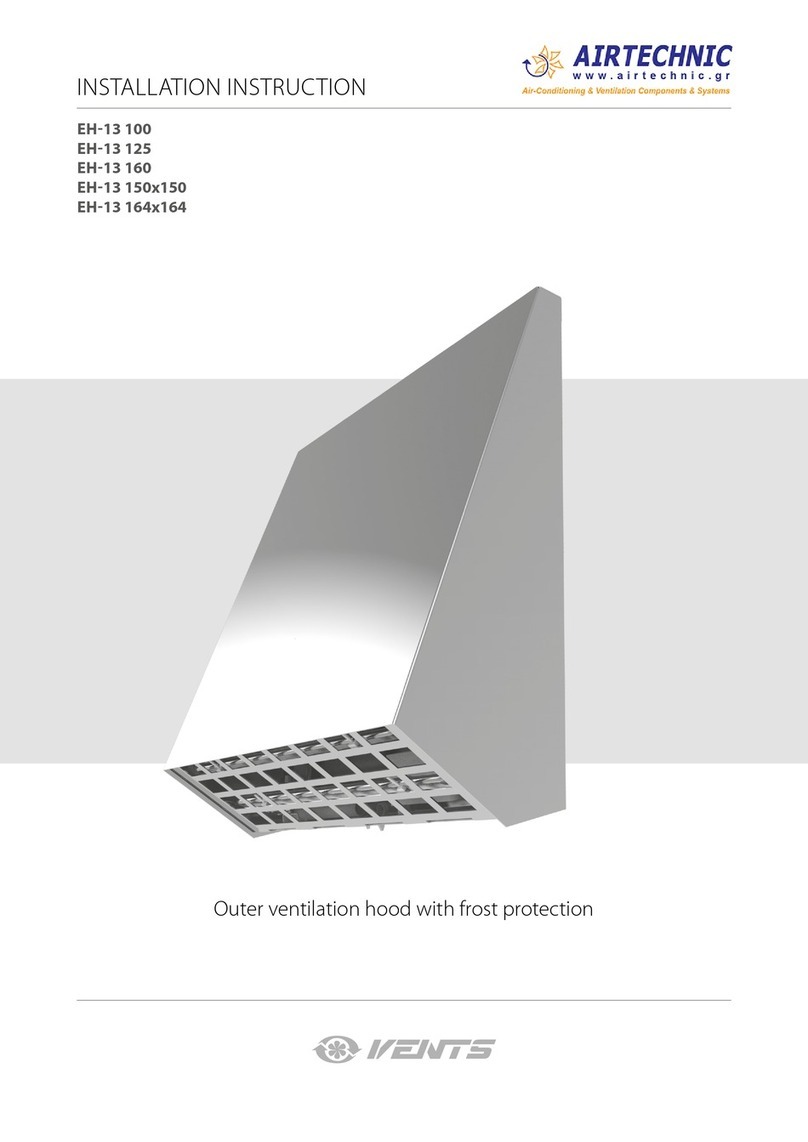
6
VUT 350 (E)U EC
RESTRICTIONS:
• Do not operate the unit outside the permissible temperature range specied in the
Operation Manual or in areas with aggressive admixtures in the air and in explosive
environments.
• Do not connect drying machines or other similar high-power equipment to the
ventilation circuit.
• Do not use the unit for handling air-dust mixtures.
DESIGN AND OPERATING PRINCIPLE
The unit design and operating principle are shown on Fig. 2. The warm stale air from the premises
is supplied to the device and puried in the exhaust lter, passed through the heat exchanger and
then extracted outside via the ducts by the exhaust fan. The cool fresh air from the outside enters
the unit through the air ducts and is stripped of impurities in the supply lter.
The air then passes through the heat exchanger and is delivered into the premises by the supply
fan. The heat exchanger ensures transfer of the heat energy extracted from the warm exhaust air to
the clean outdoor air therefore heating it up.
The air streams do not get mixed in the heat recovery process. The use of a heat exchanger
reduces heat energy losses and, consequently, the heating costs in the cold season.
The VUT 350 EU EC unit is equipped with a 2 kW electric heater with overheating protection
which heats up the supply air. However, supply air heating is not available in the «Night» mode.
The unit design and operating principle are shown on Fig. 2.
The basic conguration includes:
1. Exhaust fan;
2. Supply Fan;
3. Counter-ow heat exchanger;
4. Exhaust air, ltering class G4;
5. Supply air, ltering class G4;
6. Condensate drain pan;
7. Condensate drain tubes;
8. Control Unit;
9. Bypass;
10. Bypass control temperature sensor;
11. Electric heater (only for VUT 350 EU EC unit);
12. Supply air duct temperature sensor.
SAFETY REQUIREMENTS
Installation and operation of the unit shall be subject to the present Operation Manual and the all
appliable local building, re safety, technical and electric regulatory documents.
The unit must be properly earthed.
Prior to connecting the unit to the power mains check for visible damage as well as for any foreign
objects in the fan casing which may damage the impeller blades If necessary, contact the service centre.
ATTENTION!
Make sure to disconnect the unit from the power mains prior to any installation,
maintenance, connection and repair work.

































